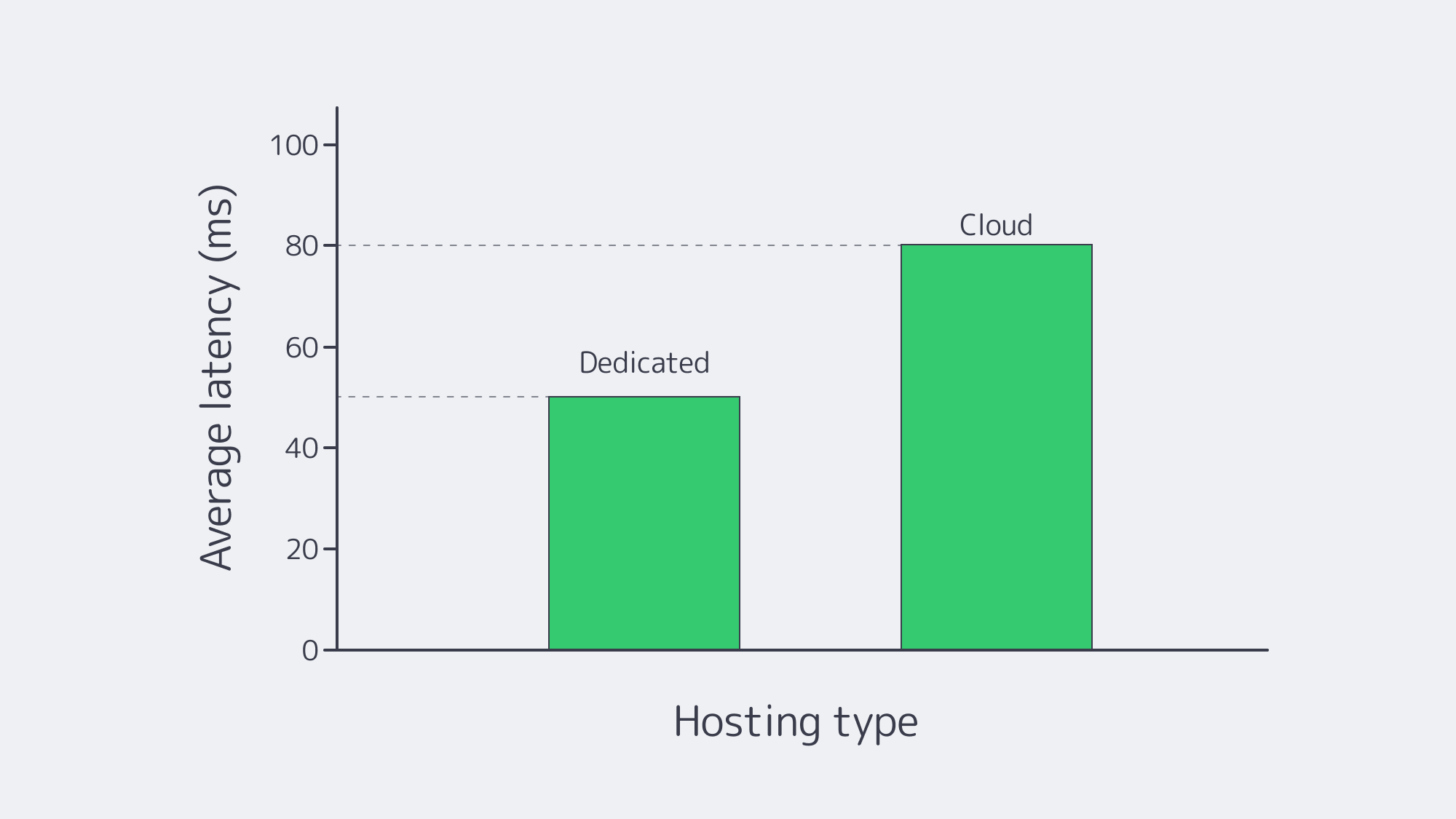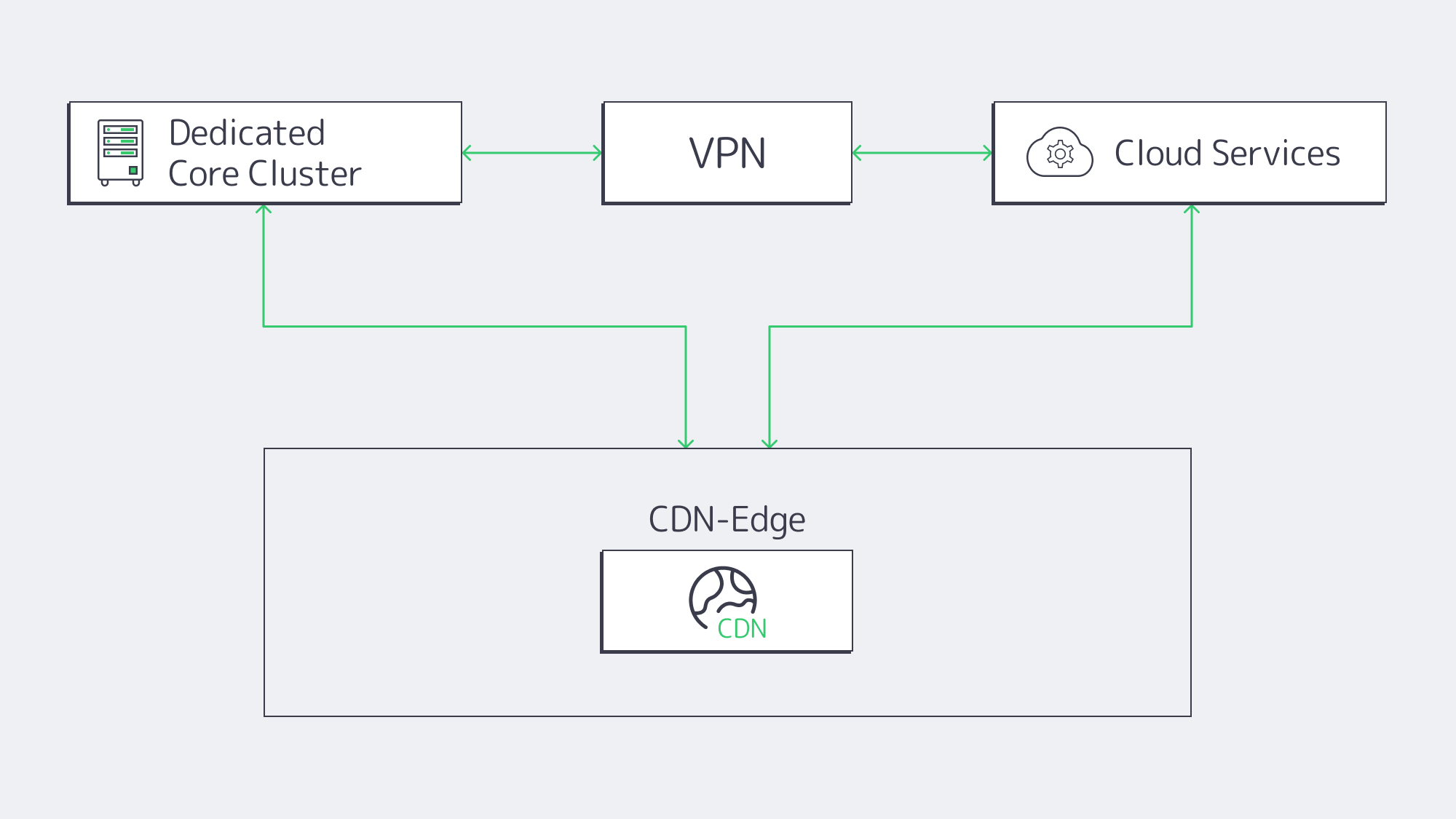Blog

Choosing the Right Infrastructure for iGaming Success
iGaming mechanics operate in milliseconds; for anyone looking to run an online casino, poker room, or sportsbook, you simply can’t risk a delay of any sort. With thousands of live wagers, a delay/outage can literally cost millions in an industry where revenue already hovers near $100 billion and is compounding at double-digit rates, according to Statista. With the stakes so high, infrastructural decisions are vital. Both customer trust and regulatory standing hang in the balance, and so it is important to make the right choices early on. Today, we will compare cloud and dedicated servers and discuss where each excels, calculate the total costs in conjunction with the performance, and weigh in on the emerging hybrid models.
Choose Melbicom— 1,300+ ready-to-go servers — 21 global Tier IV & III data centers — 55+ PoP CDN across 6 continents |
The Key Differences Between Cloud and Dedicated Servers for iGaming
| Factors | Cloud Hosting | Dedicated Server Hosting |
|---|---|---|
| Scalability | Instant elasticity; you can spin up nodes in minutes and scale down after events. | Capacity fixed per box; new hardware requires a provisioning cycle (hours to days). |
| Performance Consistency | Good average latency, but virtualization and noisy neighbors cause jitter. | Low, stable latency and predictable throughput because resources aren’t shared. |
| Cost Model | Pay-as-you-go; attractive for bursts but pricey at steady high load (egress fees add up). | Fixed monthly/annual fees; lower TCO for stable, high-traffic workloads. |
| Control & Compliance | Shared-responsibility security, limited hardware visibility, and data may traverse regions. | Full root access, single-tenant isolation, and easier compliance with data-sovereignty rules. |
| Time-to-Market | Launch in a new jurisdiction overnight through regional cloud zones. | Requires a host with a local data center; lead time shrinks if inventory is pre-racked as provided by Melbicom. |
Reliable Performance of Your Services: When Milliseconds Matter

- Cloud server strengths: many top-tier cloud servers have NVMe storage and can provide <2 ms intra-zone latency, which is ample for back-office microservices.
- Cloud server weaknesses: there can be a lot of jitter with hypervisor overheads and lack of sole tenancy, potentially causing odds suspensions, which can lead to backlash on social media, etc.
- Dedicated server strengths: noise from neighbors is eliminated completely with single-tenant boxes, which ensures sub-millisecond consistency ideal for concurrent streaming. Melbicom delivers up to 200 Gbps per server, and we have 21 Tier IV/III data centers worldwide, providing throughput that stays flat regardless of demands.
- Dedicated server weaknesses: resilience and redundancy need to be manually designed; resilience is not “auto-magicked” by a provider’s zones, as with many clouds.
With the strengths and weaknesses apparent, it is easy to see why the best modern practice is to pair a redundant cluster of dedicated machines (for odds, RNG, payment) with cloud-hosted stateless front ends. That way, you retain control of critical path processes while the web tier floats elastically.
Infrastructure Scalability & Agility: Elasticity Versus Predictability
Cloud Server Advantages
- Auto-scaling groups handle instant surge capacity changes.
- Cloning takes minutes, making QA or A/B sandbox creation a breeze, helping with development and testing.
- Nodes can be dropped in a freshly regulated state while licensing paperwork clears, which facilitates global pop-ups.
The Evolution of Dedicated Server Setups
The gap has been narrowed by modern server providers. At Melbicom, for example, we keep hundreds of pre-built server setups that can be deployed in under two hours. They are controlled by the same APIs DevOps teams expect from cloud dashboards, able to handle architects’ forecasts for Super Bowl or Euro finals loads, and hardware can be booked days ahead rather than months.
Going Hybrid
A pattern is emerging with iGaming and streaming providers merging the two options together by keeping the baseline on dedicated hardware and leaving bursts to the cloud. At Melbicom, our gaming and casino sector clients can configure dedicated clusters to run below saturation (around 70% CPU, a threshold common in autoscaling guidance) while relying on the Kubernetes HPA or Cluster Autoscaler to add cloud nodes should the threshold be exceeded.
Economics: Pay-As-You-Go vs. Fixed Power

Cloud Server Cost Dynamics
- OpEx freedom, appealing to startups and those piloting new markets.
- Hidden costs, data-egress fees, unexpected premiums for high-clock CPUs, and surcharges for managed databases.
- Higher waste, unused cloud spending is pegged at around ~25 % across industries. Often in the bid to protect latency, over-provision is the default, which can be costly.
Dedicated Server Cost Dynamics
- The billing is flat and predictable, the price includes all costs, meaning no nasty surprises for CFOs during viral promos or DDoS spikes.
- Lower at-scale unit costs once bandwidth is factored in, a dedicated unit costs less. A steady 24/7 poker network that spends $50 k/month in cloud compute is typically below $20 k on equivalent dedicated racks.
Modern Trends
When analyzed, many operators repatriate compute in terms of stabilized daily player concurrency and baseline demand. Although we are seeing evidence and further predictions of planned pull-back from public cloud operation, most are not abandoning it entirely, choosing instead to retain it primarily for variable or ancillary workloads where it excels and for cost control. A recent CIO survey found that 83% of organizations plan to repatriate at least some workloads from public cloud, primarily for cost control. However, we expect many will be reserving it for variable or ancillary workloads, where it excels.
Control, Compliance & Security: The Assurance of Single-Tenancy
- Cloud: While some providers offer ISO 27001 and PCI zones, physical-host opacity remains an issue; many gaming authorities insist on disk-level auditability, and some even request data hall entry.
- Dedicated: Audits are simple with single-tenant servers; hardware serials, sealed racks, and local key storage are easily verifiable. Regulations differ from region to region, but with Melbicom, cross-border data-sovereignty challenges are mitigated by deploying in Tier III facilities across Europe and North America and a Tier IV flagship in Amsterdam, where regulations are stricter.
- Security posture differences: Hypervisor patching is offloaded by the cloud’s shared-responsibility model, but perfect IAM hygiene is needed. With dedicated hardware, the OS and firmware must be patched, but this enables custom HSMs or proprietary anti-fraud sensors. It is now becoming common to encrypt databases with on-server HSMs and mirror anonymized analytics to the cloud.
Hybridizing Architecture: Reaping the Best of Both Worlds

- Dedicated Core, Cloud Edge Leverage dedicated clusters near the main user base for real-money game logic, RNGs, and payment gateways while utilizing low-latency cloud regions for stateless APIs, UIs, and CRM microservices.
- Cloud Burst Operating via six high-spec servers for baseline needs, with behind-the-scenes auto-scaling cloud containers ready to spring into action when triggered by a surge that dissolves post-match.
- Dev in Cloud, Prod on Dedicated Spinning up test environments with CI/CD pipelines, running tests, and deploying approved builds to hardened dedicated servers to shrink time-to-market without the associated multi-tenant exposure risks.
- Splitting For Geo Compliance At Melbicom, dedicated nodes can be used to process bets by sending anonymized aggregates to a central cloud data lake for BI and ML, an ideal solution for instances where data must stay in-country.
How the Debate Has Shifted: A Summary of Historical Context
The ideological fight that was in full swing just a decade ago has reached a stalemate. Cloud emergence once promised to “kill servers,” and the loyalists waved latency graphs in defense and exasperation. Then Moore’s Law slowed, and providers added premium SKUs, and the cloud prices plateaued. Dedicated automation also changed the argument with IPMI APIs, and inventories that can be deployed in an instant, bringing better agility to dedicated servers.
Final Word: A Winning Infrastructure Hand

The choice between cloud and dedicated is ultimately subjective; each has its merits. If uncertainty is high or the need is urgent, the cloud earns its keep, especially in situations where experimentation drives revenue, but for long-term cost efficiency, dedicated infrastructure wins hands down. It also has deterministic performance and provides the isolation that regulators look for. For iGaming demands, adaptability is key to keep up with shifting traffic and adhere to rules without economic challenges.
A forward-thinking solution is to structure your architecture to utilize the best of both worlds. With latency-critical engines locked down on high-bandwidth single-tenant servers, you have powerful, solid infrastructure that aligns with compliance, and then you can exploit the elasticity provided by cloud servers to cope with unexpected spikes, peripheral microservices, and handle experimental rollouts and ventures into new markets.
Deploy Dedicated Servers Now
Spin up high-performance single-tenant nodes in minutes and give your players the low-latency experience they expect.